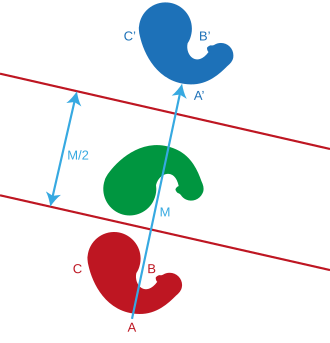Translation (geometry)
Translation (geometry)

A translation moves every point of a figure or a space by the same amount in a given direction.

Video: Translation example | Transformations
A reflection against an axis followed by a reflection against a second axis parallel to the first one results in a total motion which is a translation.
In Euclidean geometry, a translation is a geometric transformation that moves every point of a figure or a space by the same distance in a given direction.
In Euclidean geometry a transformation is a one-to-one correspondence between two sets of points or a mapping from one plane to another.[1] A translation can be described as a rigid motion: the other rigid motions are rotations, reflections and glide reflections.
A translation can also be interpreted as the addition of a constant vector to every point, or as shifting the origin of the coordinate system.
......
‹ Transformation video up Translation (geometry) video ›

 such ......
such ......
